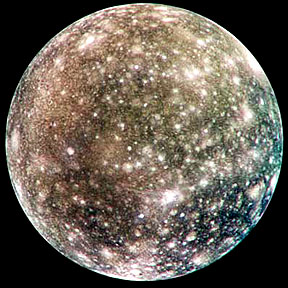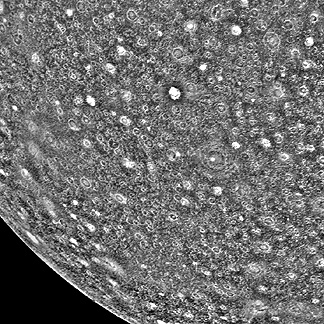Callisto has been called "boring" since its features
are not as remarkable as the other three main moons.
Callisto is also the darkest of the moons, but is in
fact brighter than our Moon (by reflection - called
Albedo).The surface of Callisto is best described
as "dirt ice" and is covered with an unknown dark
mineral deposit.

Callisto is 4,800 km in diameter and is 1,883,800
km away from Jupiter.
Like Ganymede, Callisto does have a tenuous
atmosphere composed of mostly carbon dioxide. It is
believed the gas emanates from the poles - where its
cold enough for carbon dioxide ice to form. This is
a surprise since the Voyager data suggested Callisto
is a "dead world" meaning there is no magnetic
field, no geological activity and no atmosphere.

The feature above is called Valhalla Basin, and is
one of the larger impact craters discovered. The
multi-ring appearance is a result of the shock of
impact. While geologic activity is not evident,
what is present is a small magnetic field. Because
its believed Callisto has a very small non-metallic
core, a liquid ocean under the crust might be
responsible.

The image above demonstrates a large number of
impacts - evidence that little or no geologic
activity is present.
Back to Top |

